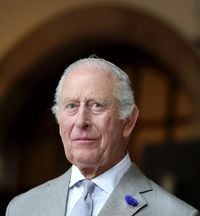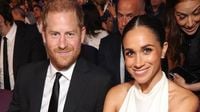On October 24, 2025, the historic grounds of Windsor Castle played host to a scene rich with symbolism and diplomatic intent. Ukrainian President Volodymyr Zelenskyy, in the midst of a critical visit to the United Kingdom, was welcomed by King Charles III with all the pageantry befitting a state occasion. The event was more than just a meeting of two leaders; it was a powerful gesture amid Europe’s ongoing struggle to support Ukraine in its war-torn fight against Russian aggression.
According to BBC, as Zelenskyy arrived at Windsor Castle, the Ukrainian national anthem rang out, followed by a royal salute. The President was then invited to inspect the 1st Battalion of the Grenadier Guards, a time-honored tradition that underscored the gravity and respect of the occasion. Photographers captured a striking image of the two leaders standing shoulder to shoulder, their expressions solemn, before they entered the castle for private talks.
This marked the third meeting between Zelenskyy and King Charles III within a year, but as reported by HELLO!, it was the first time Zelenskyy received a ceremonial welcome on British soil. The gesture was widely interpreted as a significant show of support from the British monarchy, highlighting the UK’s ongoing commitment to Ukraine’s cause.
The day’s agenda was packed. After the ceremonial welcome, Zelenskyy was scheduled for an audience with King Charles III before joining UK Prime Minister Keir Starmer and other European leaders for a key summit, known as the Coalition of the Willing. As reported by Censor.NET, this group—whose previous meeting was held in Paris on September 4 with representatives from 38 countries—convened in London in a hybrid format, reflecting the urgency and breadth of international support for Ukraine.
According to Indo-American News, Zelenskyy’s visit was part of a broader diplomatic engagement, emphasizing the importance of direct dialogue with both the British monarchy and government. The political summit, hosted by Prime Minister Starmer, brought together European leaders to discuss practical ways to bolster Ukraine’s defenses. As detailed by European news outlets, the focus was on strengthening Ukraine’s military capabilities, protecting its power grid from relentless Russian attacks, and providing the country with long-range missiles.
The timing of the summit was no accident. As reported by multiple sources, the West had just announced fresh sanctions targeting Russia’s vital oil and gas exports, a move designed to ramp up pressure on President Vladimir Putin. The message was clear: international resolve to support Ukraine was not waning, and new measures were being rolled out to counter Russian aggression on multiple fronts.
For King Charles III, the day was yet another chapter in an exceptionally busy period. Earlier that week, he and Queen Camilla had traveled to the Vatican for a groundbreaking ecumenical service in the Sistine Chapel alongside Pope Leo XIV. According to People and PureWow, this marked the first time in 500 years that a British monarch joined the Pope in public prayer beneath Michelangelo’s iconic ceiling—a moment hailed as a “significant moment” in relations between the Catholic Church and the Church of England. Queen Camilla’s choice of jewelry for the occasion—a Raspberry Pip brooch valued at $53,000 and steeped in royal history—added a layer of personal significance to the royal visit.
After their Vatican sojourn, King Charles and Queen Camilla returned to the UK, where the King’s diplomatic calendar showed no signs of slowing. As documented by HELLO!, their state visit concluded with a stop at Pontifical Beda College, where Charles unveiled a commemorative plaque and watered a Seville orange tree, marking the royal visit with a symbolic gesture of growth and hope.
Back in London, the ceremonial welcome for President Zelenskyy was a carefully choreographed affair. The quadrangle at Windsor Castle was filled with the sound of marching boots and the flutter of flags, as the Grenadier Guards stood at attention. The spectacle was not just for show; it was a tangible expression of solidarity at a time when Ukraine’s future hangs in the balance.
“It’s a significant show of support from the monarch,” noted royal correspondent Emily Nash for HELLO!, underscoring how the ceremonial welcome marked a new chapter in the relationship between the UK and Ukraine. For Zelenskyy, the day’s events were both a diplomatic opportunity and a morale boost, as he continued to rally international support for his embattled nation.
The Coalition of the Willing summit, hosted in a hybrid format to accommodate leaders from across Europe, tackled the urgent question of how best to support Ukraine’s war effort. According to BBC and European sources, discussions focused on delivering advanced weaponry, shoring up Ukraine’s energy infrastructure, and coordinating sanctions to further isolate Russia economically. The stakes could hardly be higher, with Ukraine’s power grid facing constant threats from Russian missile strikes and the country’s military in need of continued Western support.
While the spotlight was firmly on the King and Zelenskyy, the royal diary was bustling on other fronts as well. Princess Anne, President of the Royal Yachting Association, attended a luncheon at The Royal Ocean Racing Club in London and visited Royal & Garter in Surbiton. Meanwhile, Prince Andrew was reported to be in talks with Palace officials about leaving Royal Lodge, his home of two decades, amid a swirl of headlines regarding his royal status.
Across Europe, other royals were making news too. Grand Duke Guillaume and Grand Duchess Stephanie of Luxembourg embarked on their first official visit to Belgium since their accession, and in Spain, Princess Leonor and Infanta Sofia attended the Princess of Asturias Awards, with tennis legend Serena Williams among the honored guests.
But for many observers, the enduring image of October 24, 2025, will be that of King Charles III and President Zelenskyy standing together at Windsor Castle. The moment captured not just the gravity of the geopolitical crisis facing Europe, but also the enduring power of ceremony and tradition in signaling international solidarity.
As the sun set over Windsor, the events of the day served as a reminder that, even in the face of war and uncertainty, gestures of support and unity can carry profound meaning—both for those on the front lines and for the wider world watching closely.


